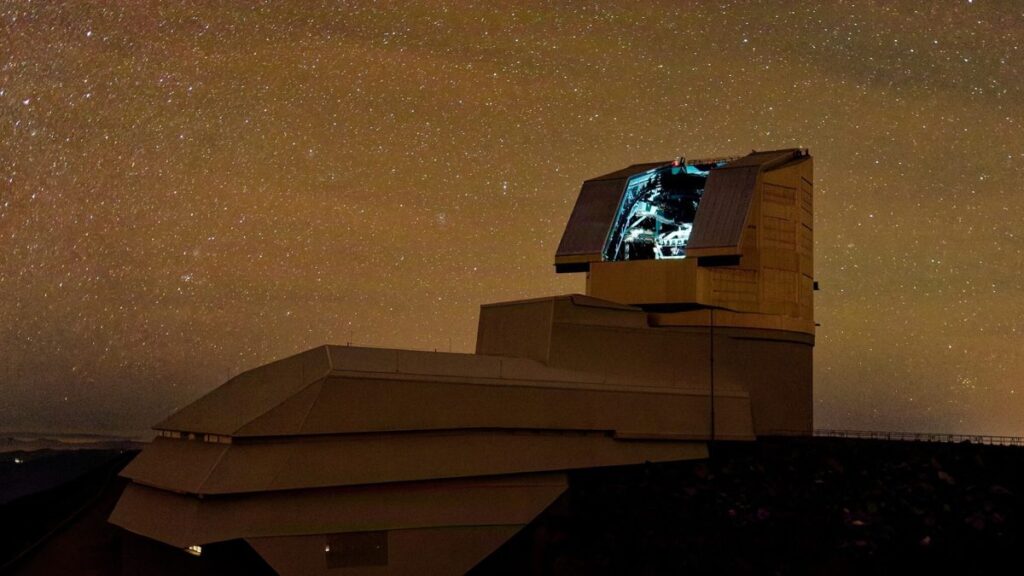
SpaceX is intensifying its efforts to minimize the impact of its Starlink satellites on astronomical observations. This initiative is highlighted in a new research paper co-authored by a SpaceX engineer alongside a team of astronomers. The paper details the company’s strategies to reduce the brightness of Starlink satellites, which are known to reflect sunlight and interfere with night sky observations.
Michael Nicholls, SpaceX Vice President, recently tweeted about the company’s ongoing efforts to make these satellites less intrusive. The concern arises from low-orbiting satellites like Starlink, which can reflect sunlight during the first few hours after dusk or before dawn. To address this, SpaceX has implemented several design changes, such as adding a mirror film and painting the satellites black. These modifications have made the newer V2 Starlink satellites “darker” than their predecessors, despite their larger size, according to Nicholls.
Research Paper Insights
The research paper, authored by SpaceX engineer Forrest Fankhauser and three astronomers, including J. Anthony Tyson, chief scientist at the Vera C. Rubin Observatory in Chile, examines how these design changes can prevent interference with the observatory’s massive telescope. The study specifically focuses on the “Legacy Survey of Space and Time,” a decade-long project to observe the night sky.
To assess the potential impact, the team developed a simulation using the telescope’s observing schedule and real-world data on Starlink satellites. They identified instances when the satellites would surpass a magnitude of 7 on the apparent brightness scale, a threshold where satellites can interfere with ground-based observations.
“For every thousand V1.5 Starlink satellites imaged by LSST in the first hour of a summer night, we find 1.2 of them will appear brighter than 7 AB magnitude,” the authors noted. “By comparison, for every thousand V2 Starlink satellites observed, only 0.93 will appear this bright.”
Potential Solutions and Challenges
The study also explored the impact of lowering the satellites from their current 550-kilometer orbits to 350 kilometers. SpaceX has suggested that this change could further reduce their effect on astronomical observations while improving Starlink’s latency.
“Only 0.56 V2 Starlink satellites per thousand brighter than 7 AB magnitude will be observed in the first hour at this height,” the paper found. “This is a ∼40% reduction in the number of bright satellites entering the focal plane compared to the constellation at 550km height.”
This research follows a 2023 paper where Fankhauser, then at the University of California, Davis, collaborated with astronomers to model and calculate satellite brightness. The current study represents a continuation of those efforts, now with Fankhauser at SpaceX.
Community and Expert Reactions
Meredith Rawls, an astronomer at the Rubin Observatory, expressed agreement with the paper’s conclusions, noting that “these specific satellites, when operating normally, shouldn’t pose too much of a problem to Rubin.” However, she emphasized that the study is limited to one observatory and one satellite constellation under normal conditions.
The International Astronomical Union’s Center for the Protection of the Dark and Quiet Sky from Satellite Constellation Interference (CPS) also highlighted the study’s limited scope. They noted that most constellation satellites have not yet reached the IAU-recommended brightness of magnitude 7.
“Most astronomers now take it for granted that some of their images will be contaminated by satellite streaks,” said retired astronomer Anthony Mallama, who has observed many low-Earth orbiting satellites exceeding 7 magnitude in brightness.
Looking Ahead
While SpaceX’s efforts are commendable, the paper acknowledges that addressing satellite interference concerns requires cooperation from the entire satellite industry. Lowering satellite orbits to 350 kilometers might help, but it comes with trade-offs, such as increased brightness due to decreased range.
“Decreased range increases brightness… However, satellites are illuminated for a smaller fraction of their orbit and are visible to fewer observers,” the paper notes.
As the dialogue between astronomers and satellite operators continues, the hope is that more companies will follow SpaceX’s lead in transparency and cooperation. The challenge remains to balance technological advancements with the preservation of our night skies.







